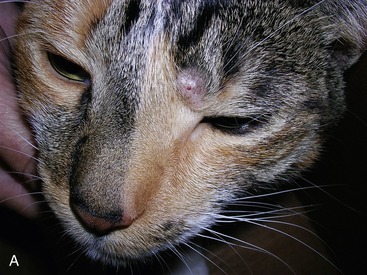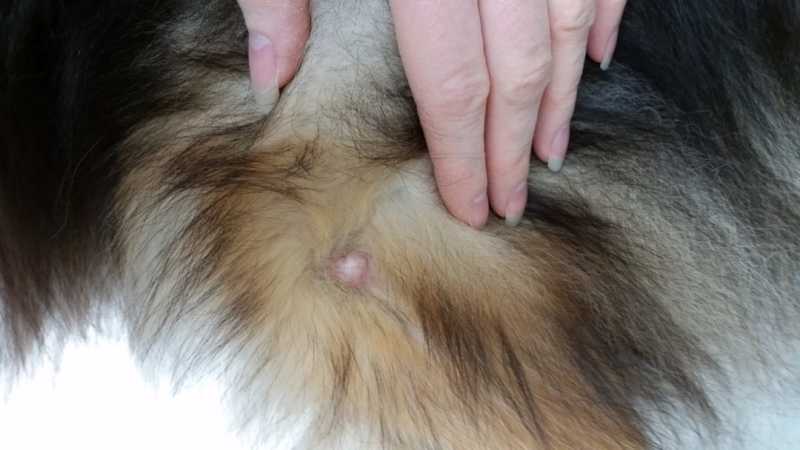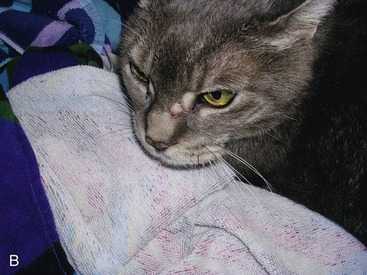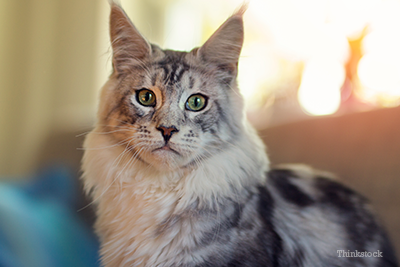mast cell tumor cat neck
External skin mast cell tumors generally form on the head neck and body but can be anywhere. Mast cell tumors most commonly develop on the skin or subcutaneous tissue however they can also primarily arise on internal organs such as the liver and spleen.

Mast Cell Tumors In Dogs And Cats Veterinary Partner Vin
Toggle navigation Home About Contact.

. It consists of nodules that are usually. Mast cell tumors are also sometimes referred to as mastocytomas. One form of cutaneous mast cell tumour is commonly seen in young cats most commonly in Siamese cats and this form spontaneously regresses over 6-24 months.
The number of cases was highest in cats older than 10 years of age. Cutaneous skin mast cell tumours most commonly affect the head and neck and affected cats develop one or multiple nodules or plaques in the skin. Cats with these tumors are usually middle age or older 4-plus years of age but any cat can develop a.
Mast cell tumors can form nodules or masses in the skin and other organs and cause enlargement of the spleen and intestine. In this case the treatment of choice would be surgical excision. Defined 05-3 cm in diameter Not pigmented or pink.
Cutaneous MCTs have a wide variety of. Head and neck tumors are relatively common in aging cats. The skin form of the feline mast cell tumor typically arises around the head and neck and lesions may be solitary or multiple.
External skin mast cell tumors normally form on the head neck and body however can be anywhere. Persians are more prone to them. MCTs associated with the limbs account for approximately 25 of all sites.
Mast cell tumors can be benign non-cancerous or malignant cancerous and have varying degrees or ratings. Mast cell tumors are the most common type of skin tumor found in dogs and the second most common skin tumor in cats. Cats and dogs with internal mast cell tumors may present in various ways depending on the organs affected.
A mast cell tumor MCT is a type of tumor consisting of mast cells. Some cats will cause self-trauma by itching and chewing during these flare-ups. Mast cell tumors have a tendency to affect older cats over 10 years of age and are especially prevalent in Siamese cat breeds.
Mast cell tumors are notoriously invasive and difficult to treat. Mast Cell Tumors in Cats In kitties mast cell tumors are most often seen in the skin of the head or neck but they can occur anywhere in the body. Symptoms of subcutaneous mast cell tumors in cats Subcutaneous mastocytomas in the cat can appear as single or multiple neoplasms the latter occurring in 20 of cases.
Surgical removal is the treatment of choice. What are the signs that my cat may have a mast cell tumor. They can be found on the head neck chest or extremities among other areas.
Mast cell tumors were the only tumors diagnosed in cats younger than one-year-old. They often appear as ulcers on the head legs or neck. In cats mast cells typically develop on the head and neck especially around the base of the ears.
If surgical excision is incomplete radiation therapy as a follow-up is generally successful at cleaning up any leftover cells. Feline mast cell tumors are commonly found in the head neck and limbs. They are small firm raised hairless and can become itchy.
Mast cell tumors MCT are the most common malignant cutaneous tumors that occur in dogs. They spread forming new ulcers. In the cat mast cell tumors of the skin are most likely to affect the head and neck.
This lecture will discuss feline oral tumors sinonasal tumors iris melanoma Hodgkins-like lymphoma salivary gland tumors tumors of the ear canal and skin. Mast cell tumors are the most common splenic tumor tumor of the spleen second most common skin tumor and third most common intestinal tumor in cats. Understanding the differential diagnoses in this anatomic area is crucial as the diagnostic and therapeutic approaches may vary.
In a study that documented skin tumors in 340 cats 26 were identified as basal cell tumors 21 mast cell tumors 15 squamous cell carcinoma and 15 fibrosarcoma. Mast cells are found in all the tissues of the body but they are most numerous in the skin the. Approximately 20 of skin masses in cats are cutaneous mast cell tumors and about 90 of those are benign.
Basal cell carcinomas are malignant tumors that occur most frequently in aged cats. They are little firm raised hairless and can become itchy. Symptoms of Mast Cell Tumor in Cats.
Some cats will cause self-trauma by itching and chewing during these flare-ups. Principles of treatment for mast cell tumors Clin Tech Small. Unlike benign basal cell tumors these carcinomas are not usually raised up from the skin.
They are most commonly found on the trunk accounting for approximately 50 to 60 of all sites. The head and neck regions are the most commonly affected areas especially the top of the head and either or both ears. Most mast cell tumors are seen as firm plaques hard flattened areas or nodules small lumps in the skin.
If your cat has cutaneous mast cell tumors it can recover and lead a normal healthy life after surgery. Boxers and Boston terriers make up 50 of all cases. In dogs mast cells can develop anywhere and even appear like discolored areas of skin on the nose.
A mast cell tumor MCT is a tumor that originates from mast cells. Cutaneous mast cell tumors present as lumps swellings or lesions in the skin or under the skin usually around the head and neck but sometimes elsewhere. These represent 1421 of all skin tumors diagnosed in dogs.
These types of tumors comprised 77 of all the cases. Mast Cell Tumors in Dogs and Cats - Veterinary Partner - VIN Most mast cell tumors arise in the skin but technically they can arise anywhere that mast cells are found. The clinical signs of feline mast cell tumors depend on the location of the tumor.
In dogs the trunk and limbs are more likely locations. Approximately 20 of skin masses in felines are cutaneous mast cell tumors and about 90 of those are benign. What Is a Mast Cell Tumor in Cats.
They are usually noticed in middle aged patients but can occur in patients of any age. In cats about 67 of MCTs also have this mutation.

Mast Cell Tumors Veterinarian In Montgomery Al Animal Hospital Of Montgomery

Mast Cell Tumor Cat Neck Park Art

Mast Cell Tumors Mastocytomas In Dogs Small Door Veterinary

Figure 3 From Mast Cell Tumors In Cats Semantic Scholar

Mast Cell Tumors Veterinarian In Montgomery Al Animal Hospital Of Montgomery


